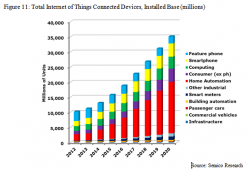The second guest keynote speaker at Semico’s Smart Lighting IMPACT event was Carolyn Weiner, Manager, Core Products, from PG&E, where she spoke about the zero net energy goals PG&E has for California and what that means for the industry.
Perhaps expected, PG&E is focused on a “greener” future. Perhaps unexpectedly, their goal is to reduce power consumption in CA by 60% by 2020. And even more astounding, they’re seeking to have all new residential construction in CA be zero net energy by 2020, and all new commercial buildings being zero net energy by 2030. These are lofty goals, but if anything this conference showed us, they’re entirely possible with the right leaders behind the effort, because the technology is readily available today.
And if you think this isn’t important, keep in mind that lighting alone in CA makes up about 25% of the energy load in the commercial building market.
The road isn’t going to be easy. There are several stumbling blocks along the way.
A few challenges PG&E is investigating include: variability in energy savings across different types of buildings, interoperability, the technical expertise required to install, and proper commissioning.
So what is one major aspect PG&E thinks builders should focus on in order to reduce energy? Daylight.
